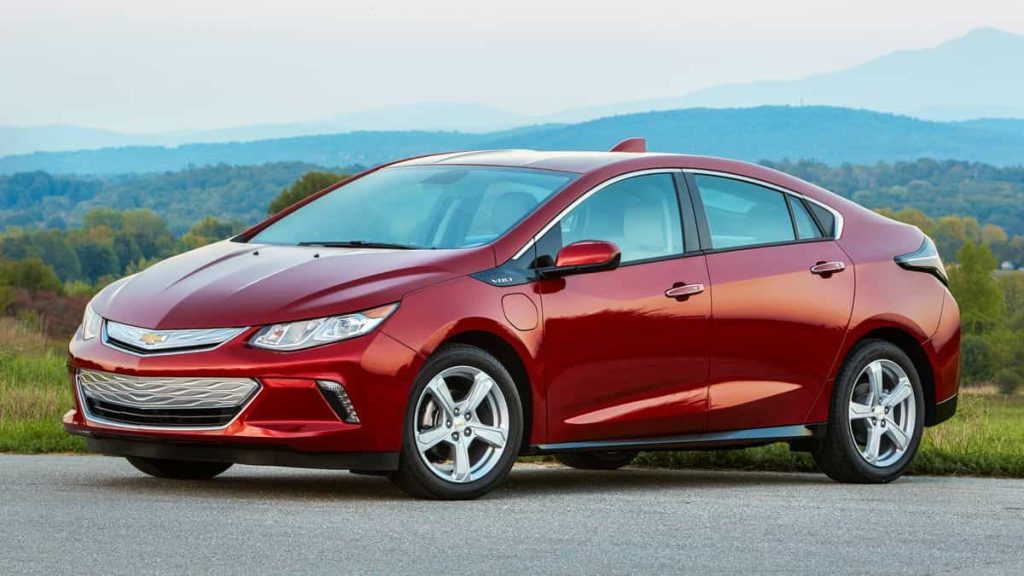Are you thinking about the Chevy Volt years to avoid?
When it comes to the Chevy, there are a few that are not the best options to get. There are some concerns with them, so it is a good idea to know what these are and choose a much better option for you.
If you are looking for information on this topic, keep reading to learn more! Let’s dive into it.

Chevy Volt Years To Avoid And Why
To answer this question simply, the worst Chevy Volt years to avoid include the ones made in 2012, 2013, and in 2017. Overall, there are other Chevy Volt models that are good. However, the ones we have just mentioned have been known for several issues that can impact your driving experience.
For instance, the problematic model years are noted for certain concerns including braking issues, park warnings showing up on the dash, airbag problems, and BCM failure. Therefore, you may end up having to pay more for repairs when you consider investing in these Chevy model years.
Now, General Motors first introduced the Chevy Volt hybrid vehicle back in 2011 in North America. It is most definitely a quick, nimble, and efficient vehicle. This is why it easily won the hearts of many people. It is particularly popular among young professionals that are looking for eco-friendly vehicles for their needs.
When maintained regularly, you can expect the Chevy Volt battery to have a lifespan of 200,000 up to about 300,000 miles. So, if you only drive about 18,000 miles in a year, you can expect your Chevy Volt to last for as much as 15 years. The quality of driving should be excellent, although it depends on the Chevy Volt model year.
Also, Chevy Volts are quite reliable. However, this depends largely on the model year. In terms of issues, those outside of the model years we have mentioned have gained positive feedback from customers.
First, let us talk about the Chevy Volt 2012. When it first came out, people were excited about its impressive features. However, it did not take too long until this model year Chevy Volt started to show some problems. For instance, the most common complaint was the battery control module failing frequently.
In hybrid vehicles, this component is responsible for regulating the voltage, which goes and comes from the lithium-ion battery. It also determines whether the voltage will be drawn from it or to send the recharging power back to it.
In the case of the Chevy Volt 2012, there were complaints about warning lights erratically showing up on their instrument cluster. The car also tends to shut down a lot and the battery loses its charge more often. Therefore, the vehicle had to be towed, which is not only inconvenient but expensive as well.
There is also the problem with coolant loss and overheating. The water pump breaks a lot, which greatly impacts the performance of the vehicle. Some reports have been noted when it comes to fires starting in the cabin, especially in the event of a side-impact collision. Hence, this model year of Chevy Volt has been declared as unsafe to drive considering these terrifying issues.
Next, there is the Chevy Volt 2013. Just like the 2012 model year, there were problems reported from it. For example, overheating, coolant loss, and water pump failure happened more frequently. But in addition to these same issues with the 2012 model, there is an extra electrical issue. This is due to the software glitch that causes the motor to stop functioning completely or to stall.
There were reports from users that after starting the vehicle, it would stall and then shut down. This impacted 4000 Volts, which means other customers did not experience these issues at all.
Aside from the stalling problem, there were complaints about a malfunctioning electronic control module. Hence, the gas engine runs constantly, which is surprising even if the battery charge is full. This caused people to be frustrated about having to refill their gas tank, and they are unable to use the car in the EV mode. So, they had to depend on gas instead of electricity.
To add to these concerns, there were problems linked with brake fluid leaks. This results in having to deal with dry reservoirs and brake flushes on a constant basis.
When the Chevy Volt 2017 was introduced, people were hoping for more improvements compared with the older models. The design was indeed more aesthetically appealing and the amenities have been upgraded. Some of the add-ons include Android or Apple auto play and a lane departure warning. Acceleration was impressive and there is a more efficient braking system.
But despite these improvements, there were still problems to deal with. For example, the electric systems were frequently problematic, not to mention a burnt smell of the battery and faulty headlights.
Read More: Acura MDX Years To Avoid – What You Need To Know
Final Thoughts
The Chevy Volt has gained popularity because of its impressive build and appearance. However, there are some model years to avoid including the ones made in 2012, 2013 and 2017. The issues vary from electrical complaints, headlight issues, faulty engine control modules, and so much more. Some of these problems are minor while others can cause safety risks, such as with the 2012 model.
Therefore, it is best to look into the best model years that may be worth your investment. These include the ones manufactured in 2016, 2018 and 2019. In fact, the 2019 is the best, which is why it has gained popularity among customers.
If you happen to encounter issues with your Chevy Volt, be sure to have these checked by a professional sooner than later. By doing so, you can ensure your safety and peace of mind on the road and avoid further problems from showing up.